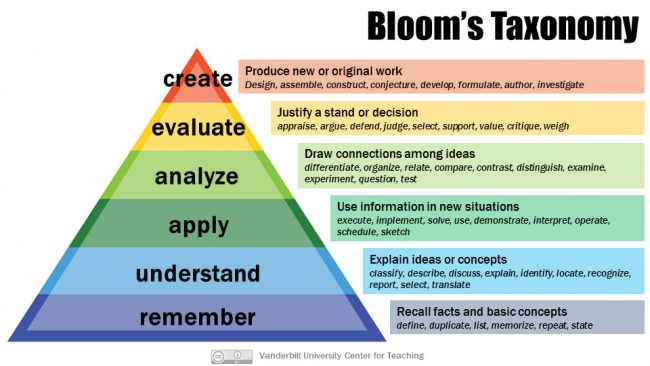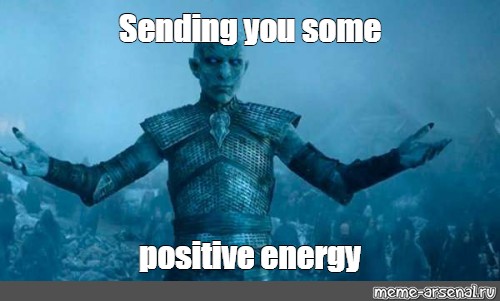In this blogpost, I will discuss learning in a face-to-face setting. I will first talk from the point of view of the “Structure of Observed Learning Outcome” (SOLO). This will serve as a simple path to understand how learning starts, develops and ends up in successful mastery of the topic.
Then I will go onwards to discussing learning from the point of view of the famous Bloom’s Taxonomy (BT). The taxonomy can be mapped on SOLO, but it gives us a more detailed understanding of the ways people use different cognitive functions to learn, from beginner to advanced.
I believe it can be extremely useful to understand learning from the point of view of these concepts. By developing the ability to think about learning, it is possible to learn and teach more effectively.
Also, the ability to empathise with a person in the position of a teacher or a student can help in saving time and energy, as often learning and problem-solving can be hampered by false underlying assumptions about the person’s skills - be it learning or teaching.
Before going into the main topic, I want to draw attention to a quote by Carl Jung:
"The meeting of two personalities is like the contact of two chemical substances: if there is any reaction, both are transformed.”
Although the context of the quote is more psycho-therapeutic that educational, the parallels to learning and teaching are there. Whether we act as teachers or students, we can only get our point across by transforming ourselves. This is because every learning situation is unique, with its specific context and specific people.
To hear and be heard means that we encountered something genuine in the other person, and were able to negotiate successfully with them, so the problem at hand could be solved.
My most comfortable area of expertise is health and fitness, so I will use a simple example situation of a coach and a client doing a nutrition consultation. This way I can give you practical examples and ideas about how the SOLO and Bloom’s Taxonomy work in practice. I’ll also do my best not to simplify the more sophisticated and abstract points of the concepts.
Hopefully, a fuller and richer image of learning can emerge from these thoughts.
Going SOLO
The SOLO has five levels. To illustrate the levels, let’s look at the nutrition consultation between the coach and the client. Let’s say the coach is called Sam and the client is called Stephen.
Stephen has been struggling with his eating habits for a long while. He eats unhealthy food most of the time. He eats irregularly. He is overweight, he has some mild body image issues and he doesn’t understand what healthy food is. He doesn’t know how to interpret his body’s signals, or how his social and psychological environment affects his behaviour.
Stephen is in the “pre-structural” level. He has an overly simplified view of food. He doesn’t know how to read nutritional labels, he doesn’t understand how calories or macronutrients work. Also, he is frustrated at his situation, so he often has emotional reactions to his friends' and colleagues' discussions about his eating habits, which has prevented him from addressing his issues.
Luckily, he has sought out a coach. With Sam, Stephen might be able to form an encouraging relationship, start learning about how to improve his eating habits and take action.
Sam is a proficient coach, and can effectively guide Stephen to a useful and fruitful understanding of his eating habits. From the point of view of the SOLO, Sam’s first goal is to get Stephen to the “uni-structural” level of understanding.
On the uni-structural level, Stephen starts to learn about different areas of nutrition. Sam will explain to him the basics of calories, how daily activity and macronutrients work. All the steps are combined with practical steps Stephen can integrate into his daily life.
For example, by tackling the two very powerful habits of eating slowly and eating 80% full on each meal, Stephen will start to see how the concepts he learns with Sam are put into practice.
Through the information given by Sam and the application, Stephen starts to see how his eating habits have many different sides to them. Seeing these sides brings him to the “multi-structural” level. Stephen’s simplified understanding is now turning into a complex whole. This can feel overwhelming, and this is where many people would quit, as it’s perfectly natural to be discouraged by the feeling that there is too much to learn.
So, at this point, Sam’s job is to keep Stephen focused on the things that matter. By dosing the complexity, Sam is able to guide Stephen through the practical and emotional hurdles that are part of a demanding learning process.
In time, the complex mess starts to morph into a unified whole. The interactions between the different moving parts start making sense. The early simple habits have build a strong, actionable foundation, and Sam can introduce more specific ideas about macronutrients, meal timing and solutions for special occasions, like parties, stress-based eating and more.
This is called the “relational level”. The overly simplified view first become a complex mess, but now it is turning into an elegant system, that Stephen can successfully implement in his everyday life. The problems he had with his eating habits have shrunk into manageable, often automatic tasks. His energy can be now directed into other endeavours and his life has improved a lot.
At this point, it might be that Stephen doesn’t need further learning, as he might feel that he has a handle on the topic that can serve him well for years and decades to come.
But, there is still one more level in the SOLO, for both Sam and Stephen to explore together. Since Sam is a proficient coach, he can operate well in the fifth, “extended abstract” level. Here Sam is able to deepen Stephen’s understanding about his eating habits.
Stephen learns how to conceptualise, generalise and apply his own, hard-earned expertise in novel situations. He can also communicate effectively with his friends, colleagues and even fitness professionals about his eating habits. He can’t be taken down by fads or other bullshit. He knows what matters, why it matters and where to put his energy.
By progressing through the SOLO stages, Sam and Stephen were able to build a powerful set of habits and ideas, that guide Stephen and make him self-sufficient for the rest of his life.
By forming a relationship based on trust and a shared vision, Sam’s and Stephen’s efforts transformed both of them. Sam learned about the specific issues Stephen was facing, and his expertise was further built up. Stephen transformed his life, as our eating habits are one of the most fundamental areas of life, that affect us, our families and our surroundings in deep ways.
So, if you want to learn effectively, you might want to go SOLO - but not alone!
But, how about Bloom’s Taxonomy?
Let your learning Bloom
Okay, sorry for the awful puns. But I can’t help myself, they just come. Anyways, let’s check out Bloom’s Taxonomy (BT).
Sam’s and Stephen’s shared journey had several stages, as they progressed towards a sophisticated and practical understanding of Stephen’s eating habits.
In the beginning Sam focused on building up Stephen’s “remembering" and "understanding” in regards to nutrition. These are the two first stages in BT. Stephen developed his basic awareness about the key issues, like calories, negotiating with family members about food, and his own psychological relationships to things like pizza, ice cream and alcohol.
After this initial phase of getting Stephen to open up, he was able to memorise, repeat and describe accurately his eating habits. He also learned to classify, discuss and explain himself to Sam, so they could together pinpoint the best next steps together.
A foundation for the third BT stage, “application”, was built. At this point, Stephen is able to solve some everyday problems he faces, by using the strategies developed with Sam. Stephen is also able to discuss his eating habits now more coherently with Sam, as his practical experiences develop his tacit knowledge.
As Stephen is learning more and more, he is able to “analyse” his situation better, which is the fourth stage in BT. Together with Sam they compare, contrast, criticise, examine and experiment different courses of action, finding those that work for Stephen and discarding others.
Through the countless little decisions and actions Stephen undertakes in his everyday life, he enters the fifth stage in BT, “evaluation”. Thus far Stephen has followed Sam’s advice pretty well, but now he is gaining more confidence. Sam and Stephen start engaging in more intense problem solving, including arguments, defending positions, judging, supporting and evaluating the things they encounter.
Just like in the “relational” level in the SOLO, the fifth stage in the BT is enough to make Stephen pretty self-sufficient in his eating habits. But, there is still a sixth stage in BT, which is “creating”.
On the creating-stage, Stephen is able to construct, create, design and communicate effectively about his eating habits. For example, he might jot down his own vision for his eating habits on paper. Then, him taking the lead Sam would be able to take the back seat and prod Stephen to make some relevant corrections while trusting that Stephen’s previously learned skills would guide him towards the right decisions most of the time.
Summary
The Structure of Observed Learning Outcomes and Bloom’s Taxonomy are powerful frameworks that can guide the understanding, planning, and execution of any interactions where learning is required.By using an example of a nutrition coach Sam and his client Stephen, I showed how both of these frameworks are in play, as Sam and Stephen progress towards a better and healthier version of Stephen.
I hope this blogpost made you more aware of the different levels and stages that a person goes through as they are learning a subject. Also, I hope that if you found this useful, you will be able to use this awareness in your own learning, whether you are in the role of a teacher or a student.
Thanks for reading!
Disclaimer: This blogpost walked you through a simplified version of how the SOLO and BT work. In reality, and especially with fully developed adults the different levels interact constantly. For example, a cognitively developed adult might feel they are able to skip certain stages of learning if they have developed a considerable amount of expertise in another area in their lives. However, understanding that the SOLO and BT are pretty universal frameworks that show how learning works can serve as a good “humbling” device, so important steps in the learning process are not skipped.
































